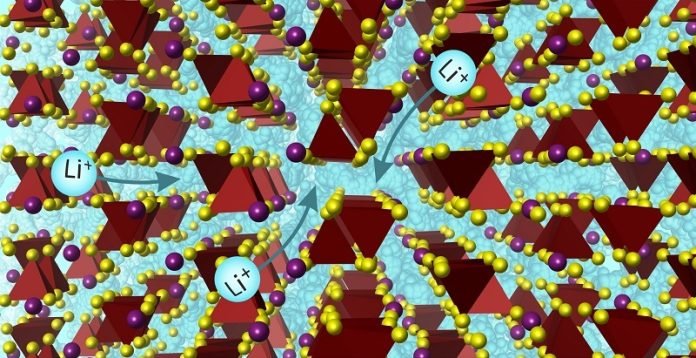
Scientists at the University of Liverpool have made an exciting breakthrough that could change the way we power everything from electric cars to smartphones.
They’ve discovered a new material that can move lithium ions super fast, similar to how highways let cars zoom from place to place.
This discovery is a big deal because it could lead to batteries that are safer, last longer, and can store more power.
Batteries, especially those in electric vehicles and electronic gadgets, need something called an electrolyte to work.
Until now, most batteries use a liquid to do this job. But liquids can be risky—they might leak or catch fire.
The new material found by the Liverpool team is solid, not liquid, which means batteries could become much safer and more efficient.
What’s really cool about this new material is that it’s made from elements we have plenty of on Earth, and they’re not harmful to the environment. This makes the batteries potentially cheaper and more eco-friendly.
The journey to this discovery was a bit like assembling a complex puzzle. The researchers used a mix of computer AI (artificial intelligence) and traditional science experiments. They crafted the material in their lab, figured out how its atoms are arranged, and then tested it in a real battery setup.
This material is unique because it lets lithium ions move through it in several different ways, thanks to its special atomic structure. This is a game-changer because, until now, scientists thought that for ions to move well in a solid, the material needed a very specific kind of structure.
This discovery opens up new possibilities for creating even better materials in the future.
Professor Matt Rosseinsky, a leading scientist on the team, explained that this breakthrough is a step away from the norm.
It shows that by combining AI with expert knowledge, we can find new materials that aren’t just slight variations of what we already know. Instead, they can be truly innovative and better suited for real-world applications.
This work is the result of a big team effort, involving experts in chemistry, materials science, and engineering from across the University of Liverpool.
Their collaborative approach, blending AI technology with scientific expertise, has paved the way for inventing new materials that could revolutionize battery technology and help tackle global challenges like climate change.
In essence, this discovery isn’t just about making better batteries. It’s about rethinking how we discover new materials and unlocking a future where clean, reliable energy could be more accessible to everyone.



